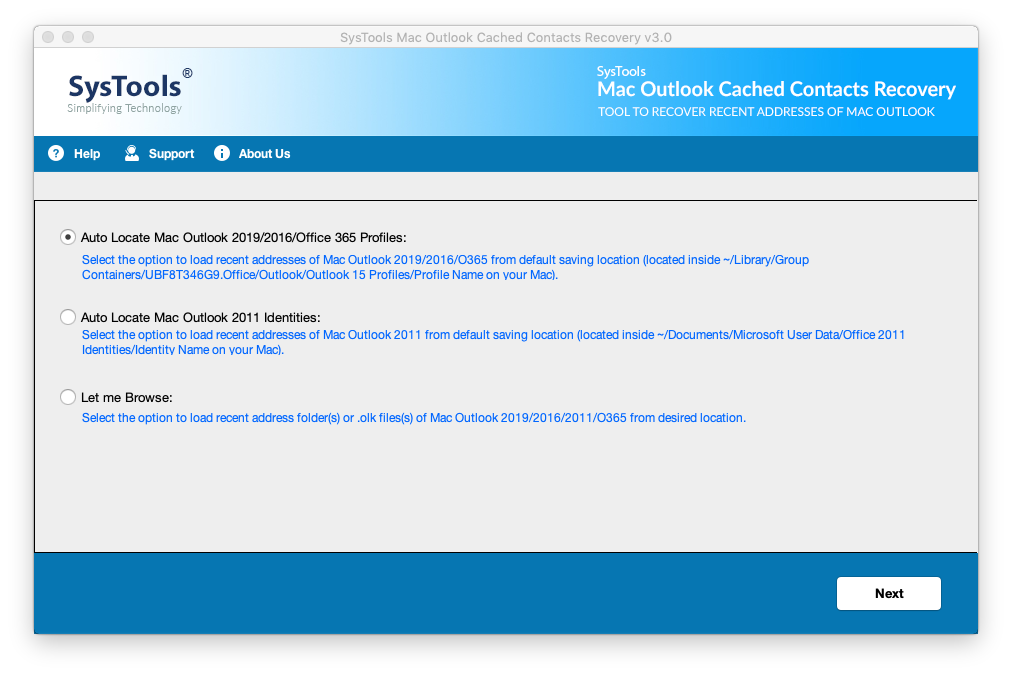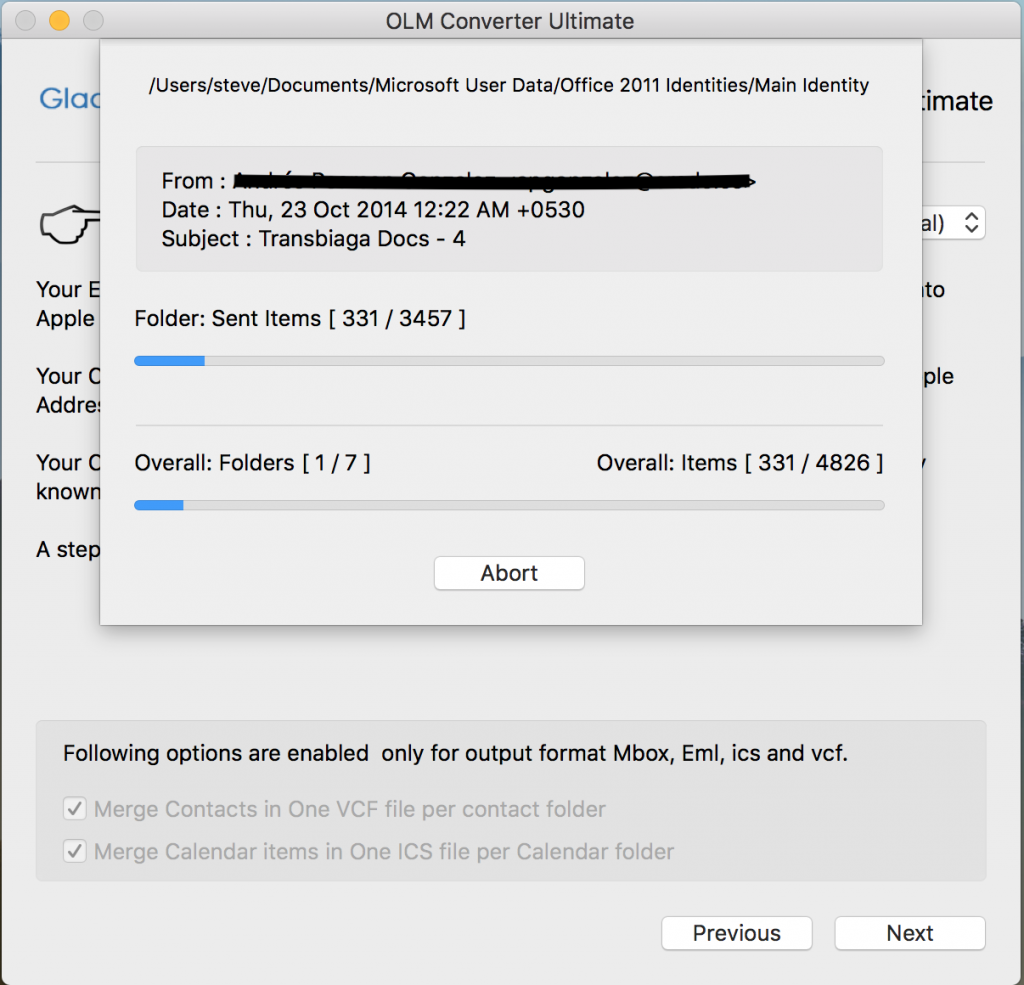

- Outlook 2011 identity folder location how to#
- Outlook 2011 identity folder location for mac#
- Outlook 2011 identity folder location password#
- Outlook 2011 identity folder location plus#
- Outlook 2011 identity folder location mac#
The above-mentioned steps are more likely to resolve the issue. Note: You can alternatively open the Database Utility by opening the Application folder->Microsoft Office 2011 folder and double-clicking the Microsoft Database Utility app.
Outlook 2011 identity folder location plus#
Add a new identity by clicking the plus sign. Click the Outlook icon in the dock by holding down the Option key on the keyboard. In such case, you must create a new identity to resolve this problem. However, there are chances that one of such identities gets damaged. Here each identity will store separate sets of mail items including tasks, calendars, account settings, etc. The Outlook might create separate identities in case you are using Outlook at more than one place like at home and at work. Note: You can alternatively open the Database Utility by opening the Application folder->Microsoft Office 2011 folder and double-clicking the Microsoft Database Utility.app. Once done, it will display the message “ Your database was rebuilt successfully.”. The rebuilding process is shown in the Rebuilding Main Identify window. Select the database from the Database Utility window. Start Outlook 2011 by holding down the option key. Note: This backup can also be used by any third-party database recovery software. This creates a copy of the identity folder. Right-click the Office 2011 identities folder. Navigate to the Documents folder->Open the Microsoft User Data folder. This space should not include the wasted space, which gets automatically created while adding or deleting mail items like appointments, tasks, and notes, etc. Note: Make sure you have three times more hard disk space available than the size of your Outlook identity. Click Get Information to check the size of the database. Navigate to the Documents folder->Microsoft User Data folder->Office 2011 Identities folder. From the upper-left corner, click the red close button to close the window. Select Force Quit to quit the application. In the Force Quit Application window, select the application. Or else hold down the Command and Option keys, and then press Esc. You need to follow the below-mentioned steps to rebuild the identity database in MS Outlook 2011 for Mac. There are various ways for building identity database, but the best way is to use the Microsoft’s inbuilt Database Utility. However, in any case, you need to rebuild your identity database. Outlook 2011 identity folder location mac#
There could be many more signs of corrupt Outlook Mac database.
Outlook fails to display the added item like calendar event or a contact. Outlook shows a window with blank office reminders. Outlook fails to show the clippings in the Scrapbook. Outlook displays incorrect item as a search result.  Outlook displays incorrect contact entries. Some of the signs for damaged Outlook Mac databases are mentioned below. However, there are certain scenarios where Outlook fails to load and can often lead to corrupt or damaged database.
Outlook displays incorrect contact entries. Some of the signs for damaged Outlook Mac databases are mentioned below. However, there are certain scenarios where Outlook fails to load and can often lead to corrupt or damaged database. 
These identities contain user mail data including messages, contacts, tasks, calendars, and more.
Outlook 2011 identity folder location for mac#
Microsoft Outlook for Mac is a widely accepted email client for accessing and managing mails.Ī Mac system with MS Outlook uses the Microsoft User Data folder to store the database file with each identity in its own folder. Outlook for Mac stores user OLM file format to store data whereas Outlook for Windows uses PST (.pst) file. Restart Outlook for this change to take effect.Mac and Windows both use Outlook and store user’s data locally. Highlight the profile that you want, access Set the default profile, and choose Set as Default. Select the profile that you want to remove, and then choose the Delete the selected profile button. Select the Create a new profile button, and then enter a name for the new profile.ĭouble-click the profile, and then enter a new name for the profile. Open Contents > SharedSupport, and then launch Outlook Profile Manager. Add, change, or delete a profileįrom Finder, open the Applications folder.Ĭtrl+click or right-click Microsoft Outlook, and then select Show Package Contents.
Outlook 2011 identity folder location how to#
To learn more about how to create user accounts, see Mac Help.
Outlook 2011 identity folder location password#
Outlook profiles don't offer password protection, and Spotlight searches from the Finder will locate Outlook items from all the profiles in the current user account. Important: If more than one person uses the same computer, Outlook profiles don't offer as much privacy as separate user accounts in the Mac OS.







 0 kommentar(er)
0 kommentar(er)
